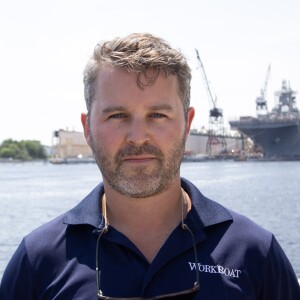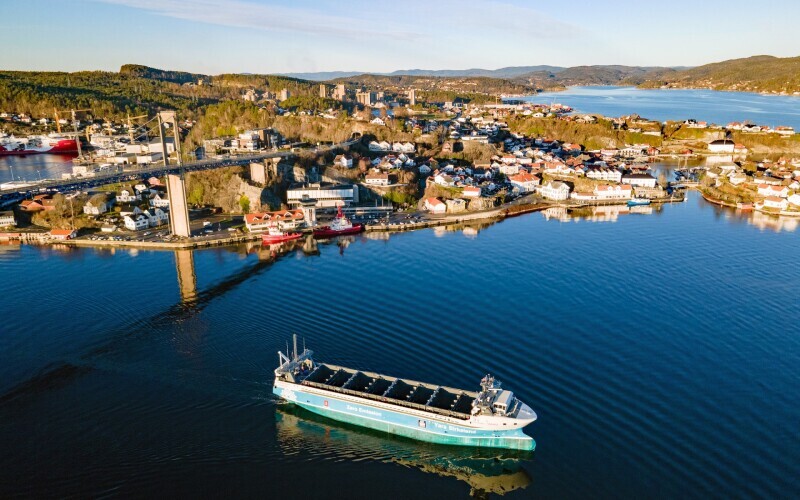Autonomous technologies are reshaping the maritime industry, streamlining operations and enhancing safety and efficiency. With advancements in artificial intelligence, marine vessels are increasingly equipped with automated systems, paving the way for autonomous navigation with minimal human intervention.
These autonomous marine vehicles rely on a suite of sensors, cameras, GPS, and navigation systems to perceive their environment and execute tasks with precision. From managing maritime traffic to preserving natural habitats, autonomous technology offers a range of benefits across various industries.
The International Maritime Organization (IMO) defines four levels of autonomy for maritime vehicles:
Level one: ships with automated processes and decision support. Seafarers are on board to operate and control shipboard systems and functions. Some operations may be automated and at times be unsupervised, however seafarers on board are ready to take control.
Level two: remotely controlled ship with seafarers on board. The ship is controlled and operated from another location. Seafarers are available on board to take control and to operate the shipboard systems and functions.
Level three: remotely controlled ship without seafarers on board. The ship is controlled and operated from another location. There are no seafarers on board.
Level four: fully autonomous ship. The operating system of the ship is able to make decisions and determine actions by itself.
Central to autonomous navigation are control centers, which oversee vessel movement and safety. Equipped with sophisticated software, these centers monitor the vehicle's position, detect threats, and facilitate task execution. Sensor technologies, including cameras, LIDAR, radar, and GPS, enable autonomous marine vehicles to detect obstacles, navigate safely, and collect environmental data. These sensors are vital for enhancing situational awareness and ensuring effective operation.
In Norway, Yara International teamed up with the Kongsberg Group to build the world’s first autonomous and zero-emission container vessel, the Yara Birkeland. The 262' vessel has a cargo capacity of 120 TEUs and is powered by a 6.8-MWh battery bank. It will transport mineral fertilizer between Norwegian ports and replace 40,000 trips by diesel-powered trucks, thereby eliminating 1,000 tons of CO2 annually. The ship is nearing the end of a two-year testing period.
Beyond commercial applications like cargo transportation and fishing, autonomous marine vehicles play a crucial role in military operations, maritime research, and environmental protection. Their unmanned nature reduces the risk of human error, making them safer and more efficient.
Additionally, the Navy announced plans to expand USV testing to Central and South America, aiming to maximize resources and enhance capabilities in the waters under the responsibility of US Southern Command (SOUTHCOM).
The Navy is also testing concepts in the Pacific for how to integrate larger USVs into their crewed fleet operations. USVs, Sea Hunter, Sea Hawk, Mariner and Ranger departed Southern California on Aug. 7, 2023 and returned to base early this year. During the five-month sea trials, the four prototypes sailed a combined 46,651 nautical miles and visited ports in Japan and Australia. Each USV operated for at least 50 days at sea at a time “almost exclusively” in autonomous mode.
Bollinger Shipyards is currently building seven USVs that are designed to detect and destroy undersea mines. With options, the contract may grow to 20 additional vessels potentially worth $123 million for Bollinger.
In April, Louisiana-based boatbuilder Metal Shark announced the debut of the 30' Prowler, a military craft combining multiple unique technologies designed to meet the current and near future warfighting requirements of the U.S. military and its allies. The company is also debuting Frenzy, designed as a high-performance, low-cost, amphibious micro-USV (unmanned surface vessel) with a payload carrying capacity of up to 14 lbs.
The Prowler vessel is a fully amphibious and capable of autonomous or remote operation on land or at sea, Prowler offers drastically simplified launch and recovery compared to traditional vessels. Prowler is capable of self-launch and self-recovery at boat ramps, without a prime mover or trailer, or from the well deck of an amphibious ship.
The usage areas of autonomous marine vehicles continue to expand with the advancement of technology. These vehicles have the potential to be used in areas such as marine research, space exploration, and underwater construction.
On the smaller USV front, Saildrone, a U.S. USV fleet that now comes in three sizes, has just completed ten years of operation during which the company’s boats have sailed over one million nautical miles, including circumnavigation of the Antarctic. Used for weather and oceanographic observations, the Saildrone Voyager design can also be deployed for law enforcement and maritime safety, drug interdiction, and border and harbor security.
There are of course the regulatory challenges that come with such rapid advancements in technology. Garret Rice, president of Master Boat Builders stated, “Our industry has to pushed to build toward innovation. Our government doesn’t work fast.”
Existing frameworks don't quite anticipate this evolution, leaving many questions unanswered. To make remote-controlled and autonomous shipping a reality, regulatory efforts are essential at all levels.
Addressing legal hurdles requires exploration of constructing and operating demonstration vessels while advocating for rule changes at the International Maritime Organization (IMO). Liability issues, while subject to national nuances, suggest less immediate need for regulatory adjustments.
The DNV is taking part in various projects involving ship automation and autonomous control, such as the ReVolt project, the Advanced Autonomous Waterborne Applications Initiative (AAWA) led by Rolls-Royce, and the Autosea project of Norwegian University of Science and Technology (NTNU), supported Kongsberg and Maritime Robotics.
While legislative shifts demand political commitment, ultimately, governments must take decisive regulatory actions at both national and international levels to navigate these technology advancements effectively.
Development of the IMO MASS Code currently underscores the regulatory framework for autonomous surface ships. This goal-based code aims to address safety, security, and environmental concerns associated with autonomous operations.
In conclusion, autonomous marine vehicles hold immense potential to transform various sectors, offering safer, more efficient, and environmentally friendly solutions.




